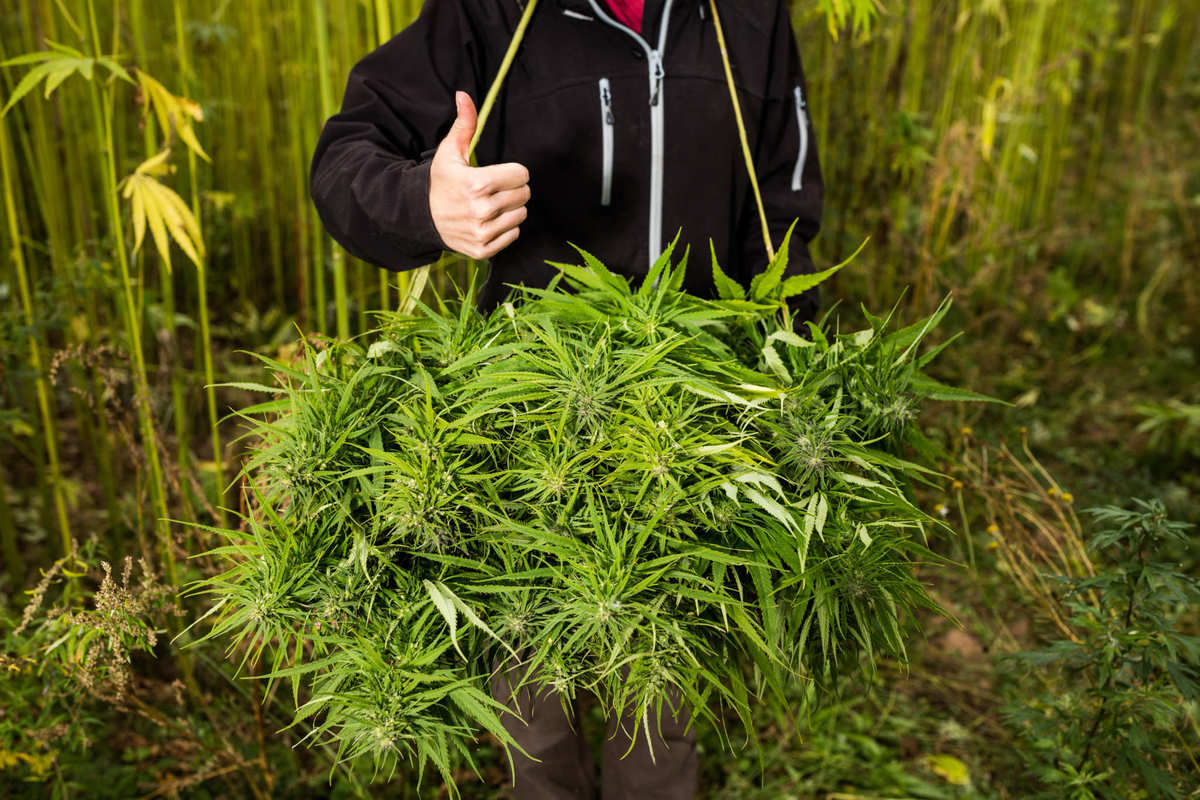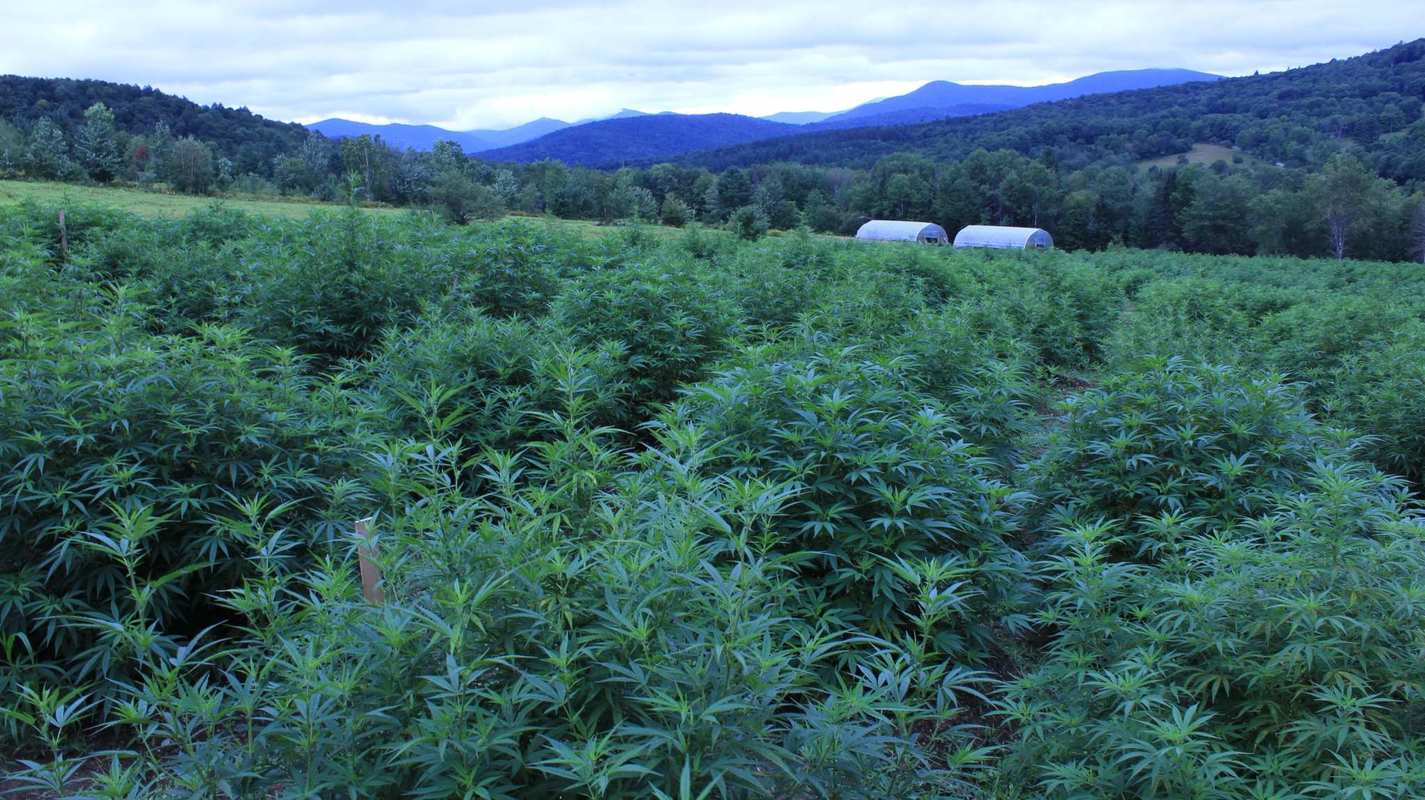Source: ministryofhemp.com
Total U.S. hemp acreage is rapidly increasing, as legalization spreads across the country.
In 2017, hemp fields expanded by 163 percent across the country. That’s over 25,000 acres of hemp grown across 19 different states. With more states opening their doors to hemp, the speculation arises, how much further can U.S. hemp acreage grow?
Hemp experts are predicting sales of hemp products could reach $2 billion by 2022. That’s nearly triple the profits from current levels. In order to understand these predictions, it’s important to also look at who is growing hemp, and how much. Through this, we can discover which states are leading the way and inspiring the rest of the country.

U.S. hemp acreage is growing rapidly despite a complicated tapestry of state hemp laws, which vary widely from place to place.
Since hemp remains in a legal gray area on a federal level, laws work differently from state to state. A hemp farmer in Colorado might have an easier time growing acres upon acres compared to the recent legalized state of Illinois. Through this information, we’ll begin to understand not only the states where hemp will spread but also how the country as a whole can benefit from progressive hemp laws.
TOP 5 STATES WITH THE MOST HEMP ACREAGE
In comparison to 2016, last year was a huge milestone for the hemp industry. States had doubled and tripled their hemp efforts, more licenses were issued, and more people were beginning to understand the benefits of this next cash crop. The following statistics are from VoteHemp’s 2017 US Hemp Crop Report:
- 25,713 acres of hemp were grown within 19 states.
- 32 universities conducted various research projects for hemp.
- 1,456 state hemp licenses were issued.
In 2017, there were 5 particular states who made huge hemp acreage leaps in comparison to 2016. Knowing of their success within the industry, it’s possible to examine the laws within each of the top five states in order to better understand how other states can increase their production.
#5 – New York – 2,000 Acres
On New York’s official state hemp website, it’s claimed the Governor has taken notable actions to inspire industrial hemp production within the state. It began, in 2015 when New York allowed a select amount of educational institutions to harvest hemp.

Increasing hemp acreage in the United States reveals this crop’s immense economic potential.
Part of the reason New York hemp acreage increased in 2017 is due to the removal of the cap on the number of sites allowed to grow hemp. The state’s program expanded to include new farmers and businesses. This allowed for the original 30 acres of hemp in 2016 to grow to 2,000 acres in 2017.
#4 – North Dakota – 3,020 Acres
In 2017, North Dakota had only 34 growers of hemp out of 42 applications. Unlike New York, this state’s 2017 Industrial Hemp Pilot Program requires those who hold a license to either “(1) be part of an agricultural or academic research program conducted by the North Dakota Department of Agriculture or by an institution of higher education; and/or (2) obtain annually a registration issued by the DEA.”
It should be noted that North Dakota made impressive progress with their hemp cultivation. In 2016, they had a mere 70 acres grown. In 2017, total hemp acreage number grew to 3,020. However, part of the reason the state hit such a high number is due to the expanding amount of land each farmer operates on rather than looser regulations.
#3 – Kentucky – 3,271 Acres
Another of the leading states within the hemp industry is Kentucky. Back in 2016, it grew a staggering 2,525 acres. That number grew to 3,271 acres in 2017. Part of the reason Kentucky has been paving way within the industry is due to the early start it had over the majority of the country.
#2 – Oregon – 3,469 Acres
Oregon’s hemp laws are similar to New York and Kentucky. Any farmer or business can apply to grow and/or handle hemp. The price per application is quite hefty at $1,300. Compare that to Vermont’s low application fee of $25!
However, ignoring the price tag of registration, Oregon has less confining laws in terms of growing cannabis in general compared to the rest of the country. Due to this, total industrial hemp acreage jumped from 500 in 2016 to 3,469 in 2017.
#1 – Colorado – 9,700 Acres
For years to come, it seems as though Colorado is going lead the hemp industry. Even in 2016, the state had more hemp acreage compared to any other in 2017 — at 5,921 acres. Yet, they nearly doubled those efforts the following year.
This might not come as a surprise considering Colorado was one of the first states to institute cannabis legalization.

A densely packed hemp field at Luce Farm. Vermont’s hemp laws are some of the most progressive in the nation. (Photo: Ministry of Hemp / Paul James)
HEMP ACREAGE: GROWTH MATTERS, TOO
Though the states mentioned above led the way for hemp acreage in 2017, it should be noted that other states made great progress as well. These include:
- Washington went from 0 acres in 2016 to 175 acres in 2017.
- Vermont went from 180 acres in 2016 to 575 acres in 2017.
- Montana went from 0 acres in 2016 to 542 acres in 2017.
- Minnesota went from 51 acres in 2016 to 1,205 acres in 2017.
These number are crucial in comprehending the future status of the hemp industry and U.S. agriculture as a whole. Since many U.S. hemp products depend on imported hemp, growth in hemp acreage is vital to the overall growth of the hemp industry.
If hemp acreage increased so much just within a year, it’s possible — with further efforts towards hemp legalization — it might reach even higher profits than predicted.
No comments:
Post a Comment